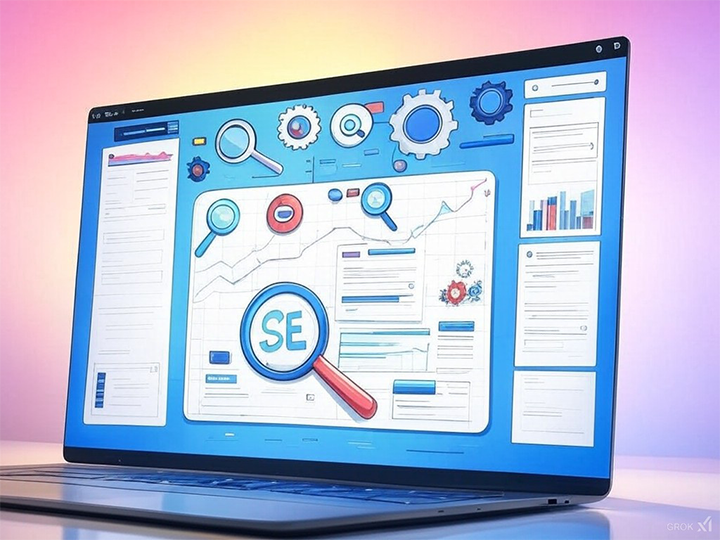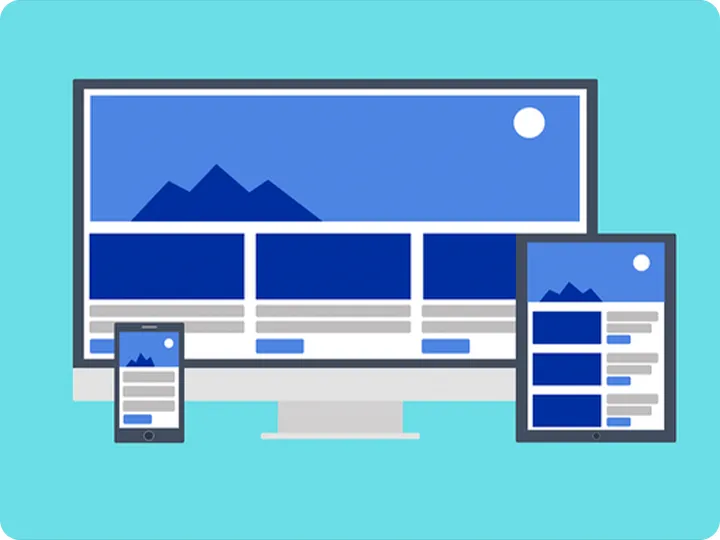Top Mistakes in Web Design and How to Avoid Them

Creating a visually appealing and user-friendly website is a critical step toward establishing a strong online presence. However, even the best designers can make mistakes that negatively impact the user experience (UX) and search engine optimization (SEO). Below, we’ll discuss the most common web design mistakes and how you can avoid them.
1. Ignoring Mobile Responsiveness: Top Mistakes in Web Design
In today’s mobile-first world, failing to optimize a website for mobile devices is one of the biggest mistakes a designer can make. Mobile traffic accounts for over 50% of global website visits, and users expect a seamless experience on their smartphones.

How to Avoid this Web Design Errors:
- Use a responsive design framework to ensure your website adapts to various screen sizes.
- Test the website’s responsiveness across multiple devices and browsers.
- Implement a mobile-first approach to prioritize usability on smaller screens.
Learn more about creating mobile-friendly websites with Google’s Guide to Mobile-Friendly Websites.
2. Slow Page Loading Speed
Website speed is a crucial factor for both UX and SEO. Research indicates that a one-second delay in loading time can decrease conversions by up to 7%. A slow website not only frustrates users but also ranks poorly on search engines, making it one of the top mistakes in web design to avoid.

How to Avoid It:
- Compress images to reduce file sizes without sacrificing quality.
- Use a Content Delivery Network (CDN) to load content faster for users in different locations.
- Minimize the use of unnecessary scripts, plugins, and heavy animations.
You can analyze and improve your website’s speed using tools like PageSpeed Insights by Google.
3. Poor Navigation Design
Navigation plays a significant role in how users interact with your website. A complicated or cluttered menu can confuse visitors, leading to high bounce rates and lost opportunities. Addressing poor navigation is critical, as it remains one of the most Common Web Design Errors impacting site performance.
How to Improve Navigation Design: Key Solutions to Avoid Web Design Errors
- Design a simple and intuitive navigation structure.
- Include a search bar to make it easy for users to find specific content.
- Test navigation paths with real users to identify potential pain points.
4. Overusing Visual Elements
While images, videos, and animations can enhance a website’s aesthetics, overloading pages with visual elements can slow down your site and overwhelm visitors.
How to Avoid It:
- Use visuals strategically and ensure they add value to the content.
- Optimize images and videos for web use by reducing file sizes.
- Keep the layout clean and uncluttered to improve readability.
5. Lack of Clear Call-to-Actions (CTAs): A Major Web Design Error
A website without clear CTAs leaves users unsure of what to do next. Whether it’s signing up for a newsletter or purchasing a product, CTAs guide users toward taking action.

How to Avoid It:
- Design prominent and visually distinct CTA buttons.
- Use action-oriented language, such as “Subscribe Now” or “Get Started.”
- Place CTAs in high-visibility areas, such as the top of the page or near key content sections.
6. Ignoring SEO Best Practices: one of the common Mistakes in Web Design
Even a beautifully designed website won’t succeed if users can’t find it. Neglecting SEO fundamentals like proper use of meta tags, headings, and alt text can hurt your website’s search visibility.
How to Avoid It:
- Conduct keyword research and integrate relevant terms naturally throughout the content.
- Optimize page titles, meta descriptions, and headers with primary keywords.
- Use descriptive alt text for all images to improve accessibility and SEO.
Why Addressing These Mistakes Matters
By avoiding these common web design errors, you can significantly improve your website’s performance. A well-designed site enhances user experience, boosts SEO rankings, and increases conversions. This not only attracts more visitors but also encourages them to stay longer and engage with your content.
Conclusion
Web design isn’t just about making a website look good—it’s about creating a functional, fast, and user-friendly experience. Avoiding common mistakes like poor navigation, slow loading speeds, and lack of mobile responsiveness can make a significant difference in your site’s success. Implement these tips to ensure your website not only attracts visitors but also keeps them engaged.
By staying mindful of these pitfalls and continuously optimizing your design, you’ll create a website that delivers value to both users and search engines. Explore more insightful articles on web design, SEO, and development at our blog page.

